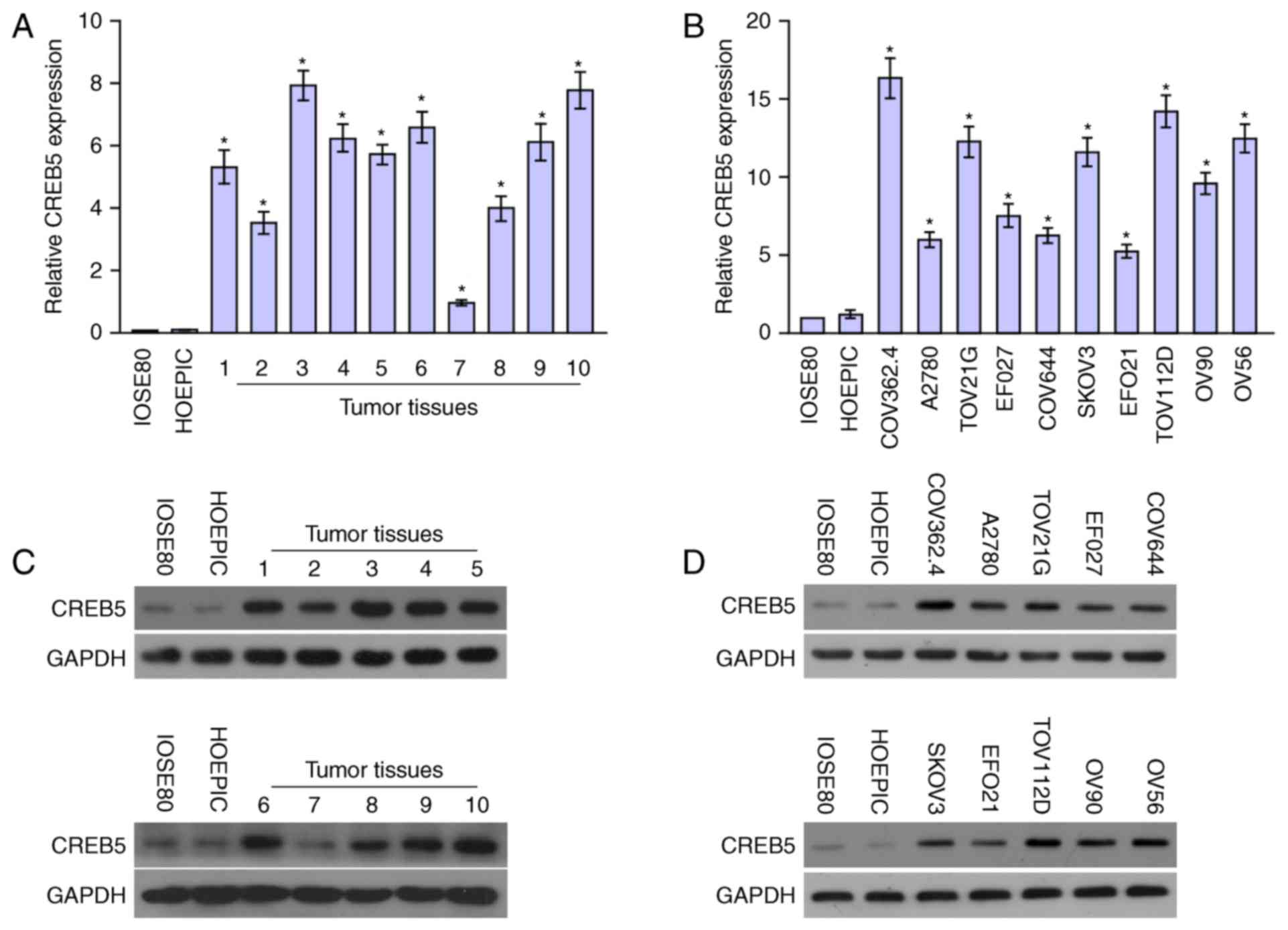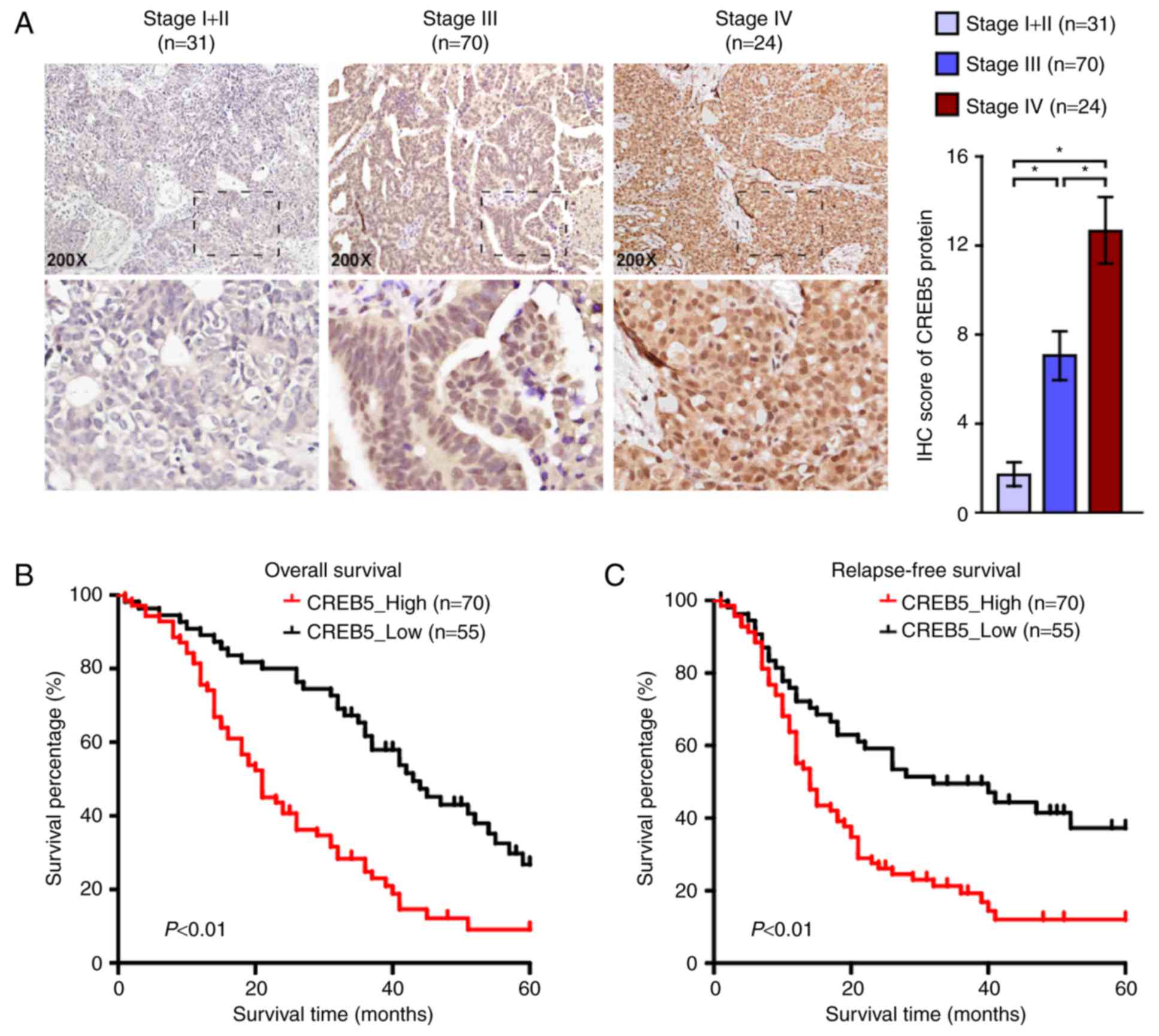CREB5 promotes tumor cell invasion and correlates with poor prognosis in epithelial ovarian cancer
- Authors:
- Published online on: October 20, 2017 https://doi.org/10.3892/ol.2017.7234
- Pages: 8156-8161
Metrics: Total
Views: 0 (Spandidos Publications: | PMC Statistics: )
Total PDF Downloads: 0 (Spandidos Publications: | PMC Statistics: )
Abstract
CAMP responsive element binding protein 5 (CREB5) has crucial roles in regulating cell growth, proliferation, differentiation and cell cycle regulation. CREB5 has been identified to be overexpressed in several types of human cancer. However, the expression characteristics of CREB5 in epithelial ovarian cancer remains unknown, and its potential clinical prognostic significance has not yet been elucidated. In the present study, quantitative polymerase chain reaction (qPCR) and western blot analysis were performed to detect CREB5 mRNA and protein expression levels in 10 fresh tissue and cell lines epithelial ovarian cancer. Furthermore, CREB5 expression was analyzed using immunohistochemical analysis in 125 clinicopathologically characterized ovarian cancers: Stage I+II (n=31), stage III (n=70), stage IV (n=24). The patient survival rate was evaluated using Kaplan‑Meier analysis. CREB5 was significantly overexpressed at both the mRNA and protein levels in epithelial ovarian cancer cells. There was a significant positive correlation between high CREB5 expression and increasing the International Federation of Gynecology and Obstetrics (FIGO) stage and pelvic lymph node metastasis (P<0.05). Patients with high CREB5 expression had a shorter overall survival, whereas patients with low CREB5 expression had longer survival. In addition, patients with high CREB5 expression had shorter relapse‑free survival whereas patients with low CREB5 expression had longer relapse‑free survival. Univariate logistic regression analysis and stepwise multivariate analysis all revealed that the FIGO stage and high CREB5 expression were significant risk factors for epithelial ovarian cancer (P<0.001), which suggested that CREB5 upregulation may be associated with a poor prognosis; therefore, it may be an independent prognostic indicator of epithelial ovarian cancer and may serve as a tumor‑aggressive gene.












